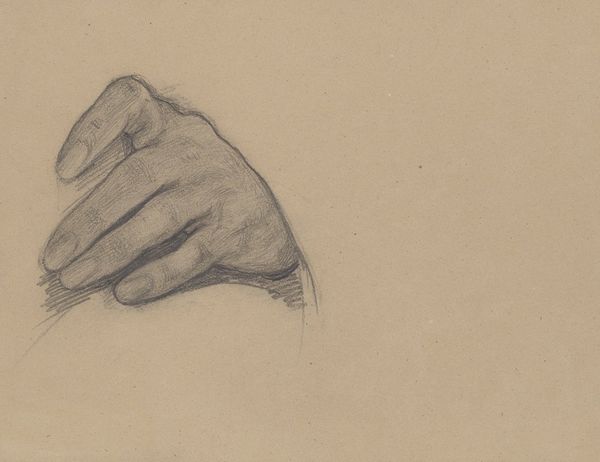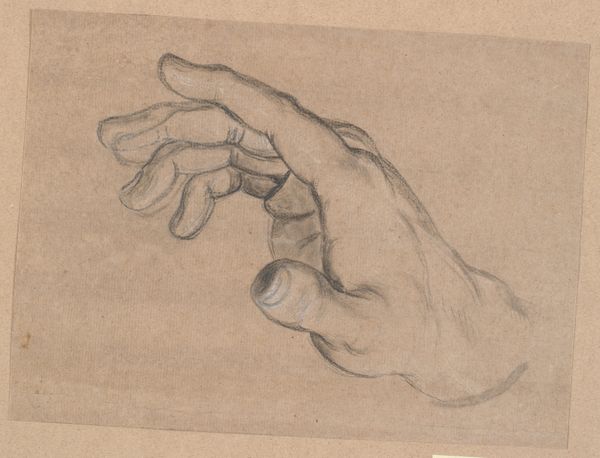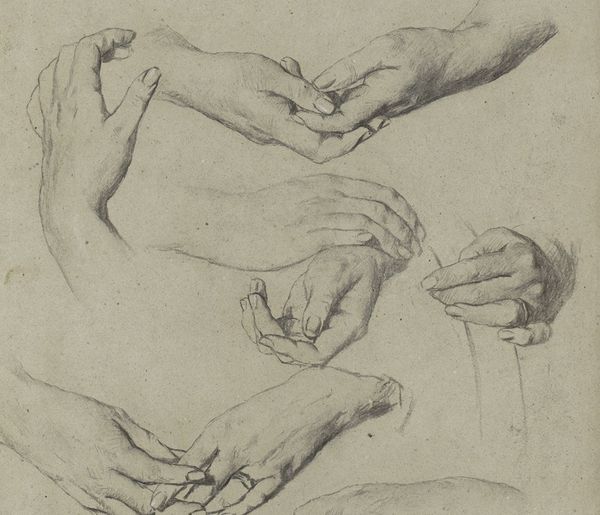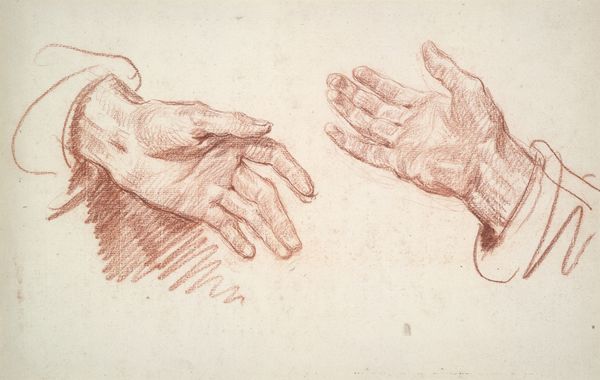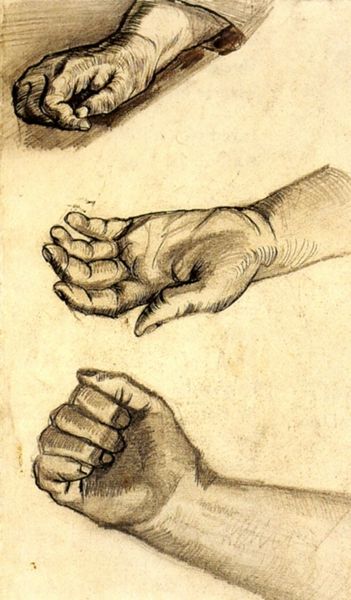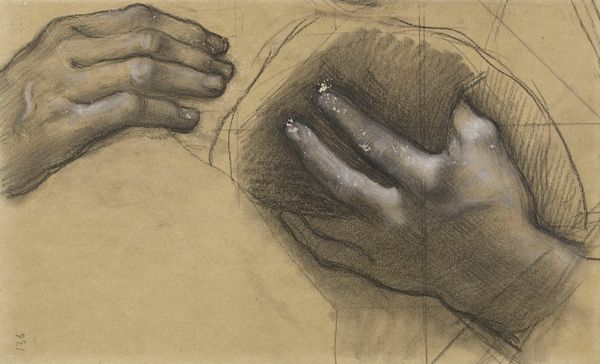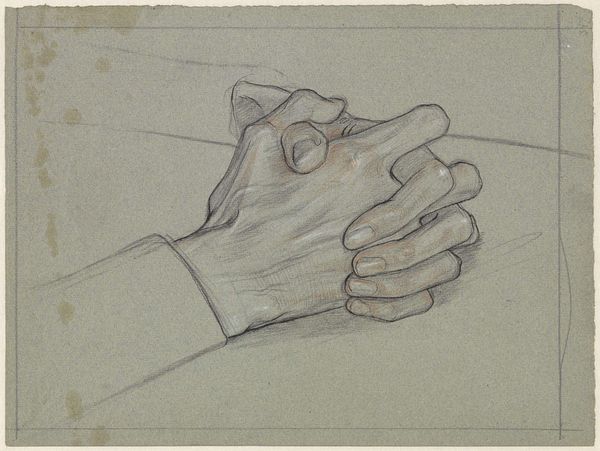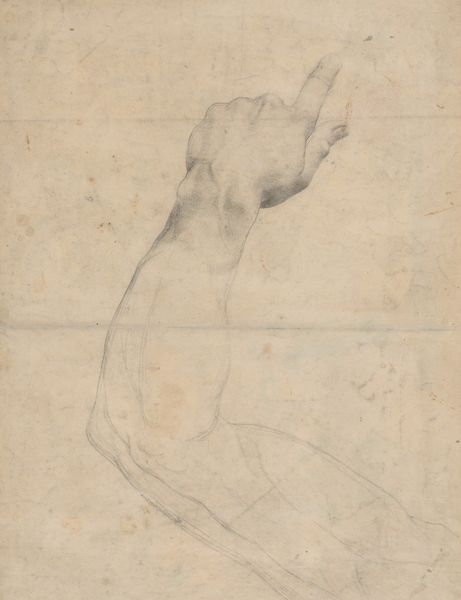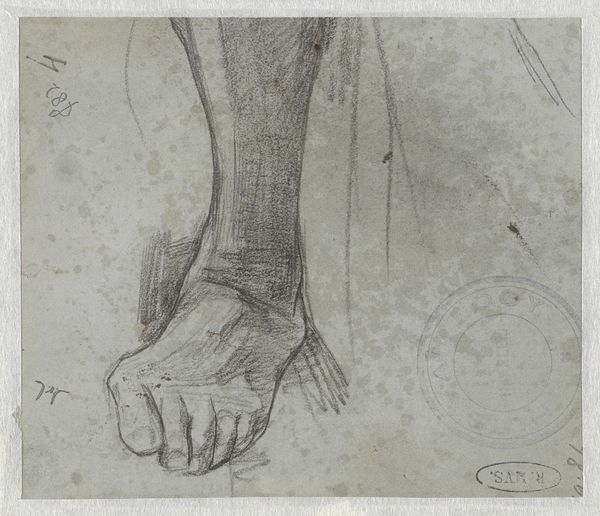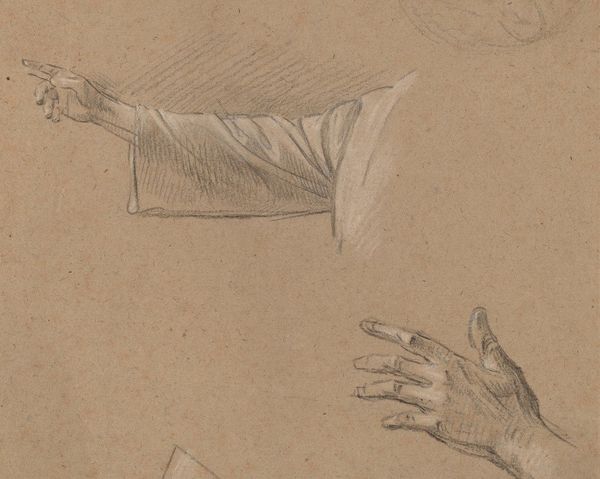![Clasped Hands [verso] by Giacomo Cavedone](/_next/image?url=https%3A%2F%2Fd2w8kbdekdi1gv.cloudfront.net%2FeyJidWNrZXQiOiAiYXJ0ZXJhLWltYWdlcy1idWNrZXQiLCAia2V5IjogImFydHdvcmtzLzIxNzk4MGEwLTEwMDAtNDczOS1iNDBkLTU4NjRmMGZhOTFlZi8yMTc5ODBhMC0xMDAwLTQ3MzktYjQwZC01ODY0ZjBmYTkxZWZfZnVsbC5qcGciLCAiZWRpdHMiOiB7InJlc2l6ZSI6IHsid2lkdGgiOiAxOTIwLCAiaGVpZ2h0IjogMTkyMCwgImZpdCI6ICJpbnNpZGUifX19&w=3840&q=75)
drawing, charcoal
#
drawing
#
charcoal drawing
#
figuration
#
form
#
charcoal
#
realism
Dimensions: overall: 26.8 x 37.5 cm (10 9/16 x 14 3/4 in.)
Copyright: National Gallery of Art: CC0 1.0
Editor: Here we have Giacomo Cavedone’s "Clasped Hands [verso]," a charcoal drawing from around 1612. It strikes me as a very intimate portrayal, the stark contrast adding to the intensity. What are your observations on its form and technique? Curator: I find the image to be a rigorous study in form. Consider the interlocking shapes—the artist directs our gaze through a deliberate choreography of light and shadow. Note how the charcoal is employed not just to depict, but to construct volume. Where does your eye go first and why? Editor: My eye is immediately drawn to the knuckles. The way Cavedone has rendered the shadows there really makes them pop. It’s fascinating how such a simple subject becomes so complex under scrutiny. Curator: Indeed. The artist is primarily concerned with the interplay of light and shadow and the expression of volume, wouldn't you agree? We can discern a conscious effort to eschew superfluous details in favor of an elemental presentation. It is not about mere representation, but rather the inherent language of form. Editor: So you're saying the hands themselves are secondary to the exploration of shape and light? Curator: Precisely. Observe the texture created solely through charcoal— a testament to the inherent expressive power of the medium. We might contemplate this work through the lens of structuralism: dissecting it into its constituent parts of line, tone, and texture to unlock its deeper meaning, which resides not in what it depicts, but how. Editor: That gives me a completely different way of appreciating it. Curator: I agree. Now, whenever I see it, I also see a lesson in visual grammar itself. Editor: Thanks, it helped me to see beyond just ‘hands’. It is interesting to reflect on pure shape and its effect.
Comments
No comments
Be the first to comment and join the conversation on the ultimate creative platform.
